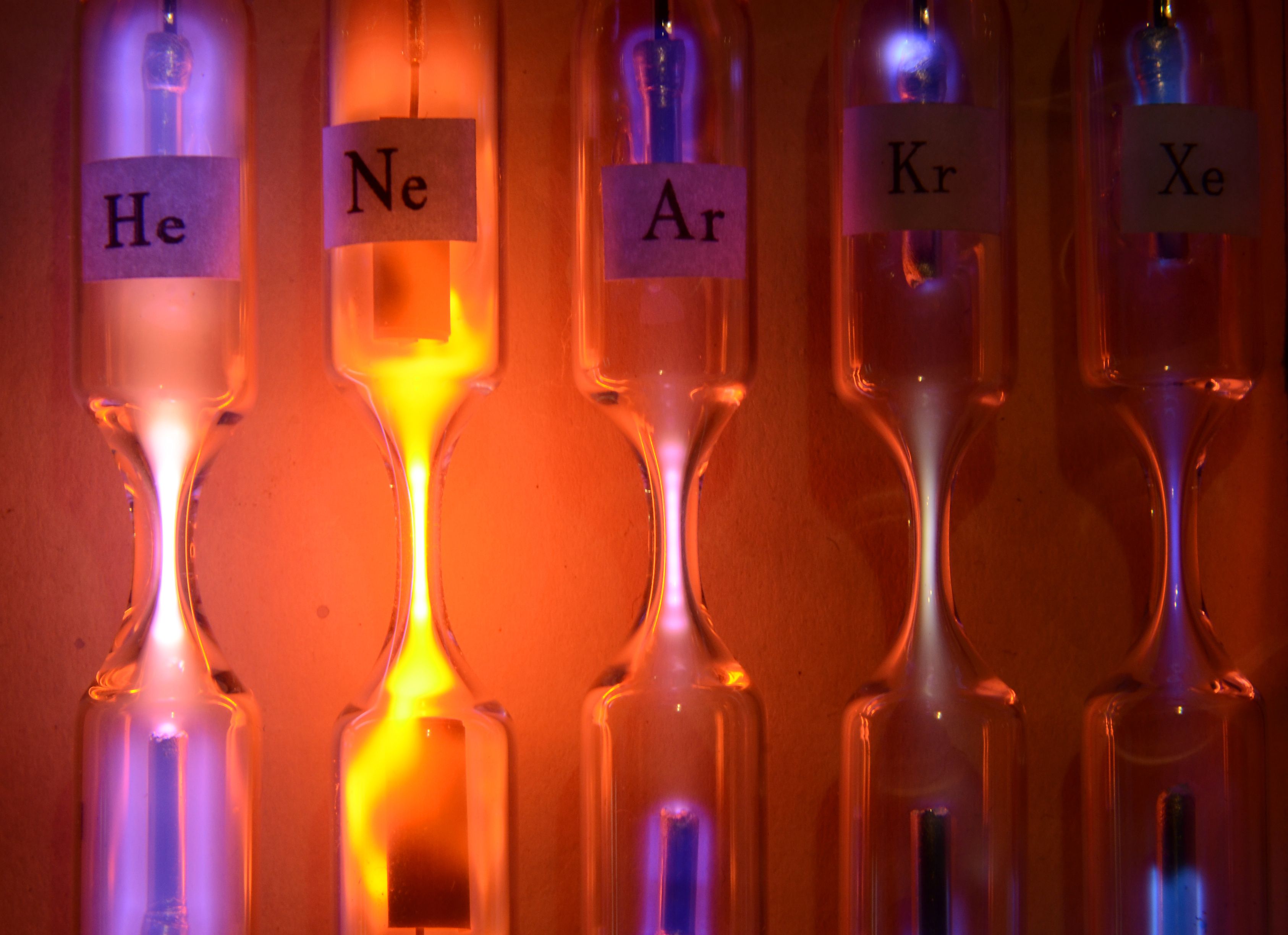Molecular Dynamics-Based Model Enhances Ion-Neutral Collision Simulations in Mass Spectrometry
A molecular dynamics trajectory approach was shown by a research team to improve ion mobility predictions with deviations of mere percentage points from experimental values.
Precise understanding of ion-neutral collisions is crucial for accurate simulations. A recent study by Michelle Rajkovic, Thorsten Benter, and Walter Wißdorf from the Department of Physical and Theoretical Chemistry at the University of Wuppertal, Germany, published in the Journal of the American Society for Mass Spectrometry, introduces an advanced collision model within the open-source Ion Dynamics Simulation Framework (IDSimF) (1). This model employs molecular dynamics-based trajectory methods, significantly improving ion mobility predictions in mass spectrometry simulations.
Tubes with inert gases excited with high voltage. From left to right: Helium, Neon, Argon, Krypton and Xenon. Each tube emits a different color and intensity. | Image Credit: © Kim - stock.adobe.com

Mass spectrometry is a cornerstone technique in analytical chemistry, providing insights into the structural parameters of gas-phase analytes. Ion mobility spectrometry (IMS) and ion mobility mass spectrometry (IM–MS) are two powerful methods within this field. However, achieving high-quality simulations of these systems requires an accurate description of ion-neutral collisions.
Traditional ion-trajectory simulation software approaches, such as SIMION (simulation of ion optics in a neutral environment), have relied on simplified collision models, like hard-sphere collision modeling and statistical diffusion simulations. These models, while useful, are limited in their predictive capabilities. In contrast, collisional cross-section (CCS) modeling programs like MOBCAL, IMoS, and Colloidoscope have improved ion mobility predictions by incorporating explicit scattering processes with molecular dynamics-based trajectory methods. However, they are primarily designed for equilibrium conditions and cannot handle nonequilibrium collision modeling within ion trajectory simulations.
The main objective of this recent work was to address this limitation. The researchers extended the IDSimF, an open-source framework for simulating ion dynamics under various conditions. That extension incorporated an advanced collision model employing the molecular dynamics trajectory method, in turn enabling a detailed microscopic description of ion-neutral collisions within ion-trajectory simulations.
To validate the predictive abilities of this model and estimate its runtime requirements, the researchers turned to drift tube ion mobility spectrometry (DT-IMS). Simulated high-field ion mobilities for small ion systems within a drift tube IMS were compared to experimental values from the literature and an implementation of a hard-sphere model in IDSimF for helium and argon as background gas particles.
The results of this study are promising. The molecular dynamics trajectory approach demonstrated significant improvements in ion mobility predictions, with deviations of only a few percent from experimental values. This enhancement in predictive accuracy is a testament to the potential of the molecular dynamics collision model as a foundation for nonequilibrium ion dynamics simulations and the development of improved ion dynamics modeling methods.
In summary, this research offered valuable insights for the field of mass spectrometry. By enhancing the accuracy of ion-neutral collision simulations, especially in nonequilibrium conditions, the advanced collision model within IDSimF holds the promise of advancing our understanding of gas-phase analytes and improving the quality of mass spectrometry analyses in various scientific and industrial applications.
This article was written with the help of artificial intelligence and has been edited to ensure accuracy and clarity. You can read more about our policy for using AI here.
Reference
(1) Rajkovic, M.; Benter, T.; Wißdorf, W. Molecular Dynamics-Based Modeling of Ion-Neutral Collisions in an Open Ion Trajectory Simulation Framework. J. Am. Soc. Mass Spectrom. 2023, 34 (10), 2156–2165. DOI: 10.1021/jasms.3c00139
Study Explores Thin-Film Extraction of Biogenic Amines via HPLC-MS/MS
March 27th 2025Scientists from Tabriz University and the University of Tabriz explored cellulose acetate-UiO-66-COOH as an affordable coating sorbent for thin film extraction of biogenic amines from cheese and alcohol-free beverages using HPLC-MS/MS.
Quantifying Microplastics in Meconium Samples Using Pyrolysis–GC-MS
March 26th 2025Using pyrolysis-gas chromatography and mass spectrometry, scientists from Fudan University and the Putuo District Center for Disease Control and Prevention detected and quantified microplastics in newborn stool samples.
Multi-Step Preparative LC–MS Workflow for Peptide Purification
March 21st 2025This article introduces a multi-step preparative purification workflow for synthetic peptides using liquid chromatography–mass spectrometry (LC–MS). The process involves optimizing separation conditions, scaling-up, fractionating, and confirming purity and recovery, using a single LC–MS system. High purity and recovery rates for synthetic peptides such as parathormone (PTH) are achieved. The method allows efficient purification and accurate confirmation of peptide synthesis and is suitable for handling complex preparative purification tasks.






